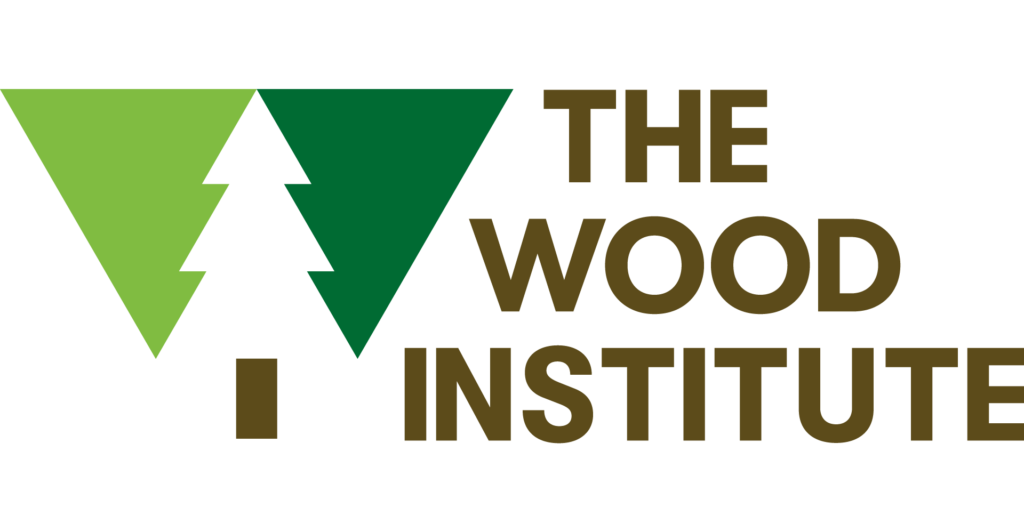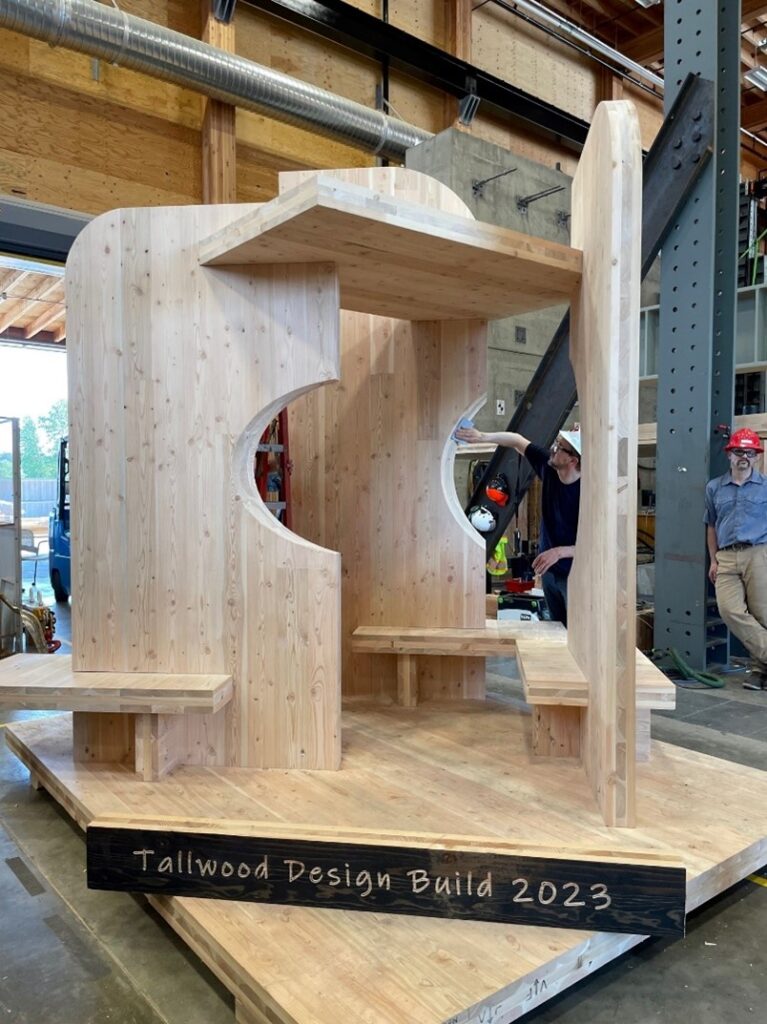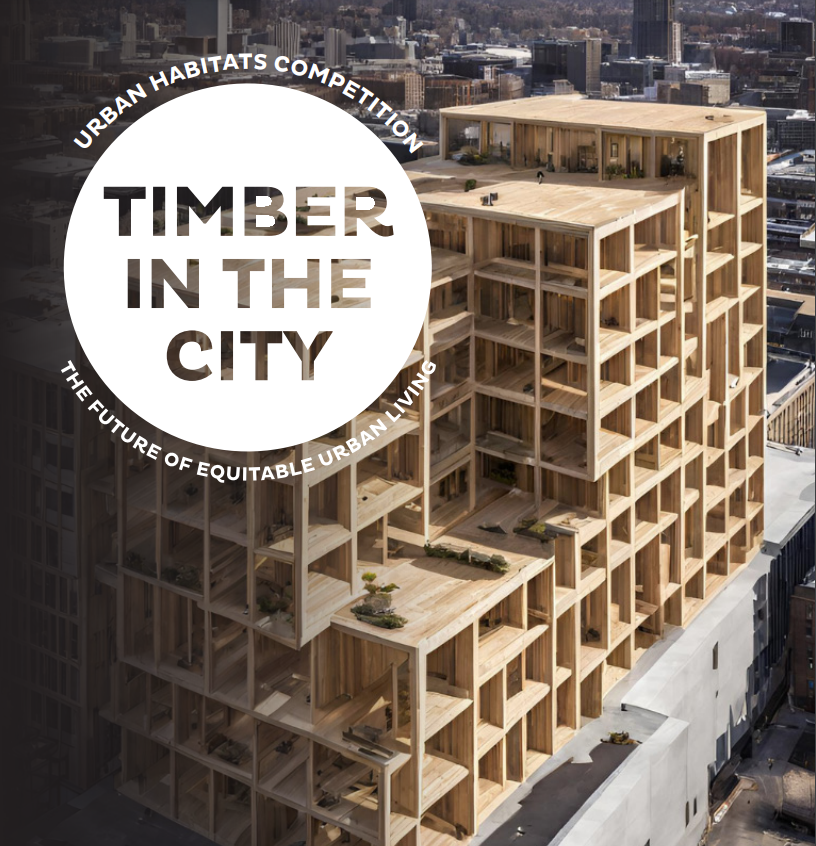The SLB is committed to furthering educational opportunities for design and construction professionals, code officials, developers, students, and faculty of postsecondary institutions.
The SLB’s online learning portal, the Wood Institute, launched in July 2020 as the first comprehensive destination for wood education.
Online learning guides project teams on how to avoid and overcome barriers related to wood construction.

The Wood Institute’s expansive catalog of courses on wood design, construction, and current codes and standards allows architects, engineers, contractors, and building code officials to earn continuing education credits on-demand from the SLB’s funded programs—American Wood Council, Think Wood, and WoodWorks—and additional partners.
The Wood Institute’s 170+ contemporary course offerings have been carefully developed by expert professionals in wood design and construction. Course topics include light-frame, mass timber, carbon, sustainable forestry, codes, building science, prefabrication and construction process, interiors, decks, and more. Courses have been approved for credit by leading organizations including the AIA, GBCI, ICC, NCSEA, and others.
All courses are free, and the SLB and its partners are adding new course content regularly, as well as taking steps to provide ongoing project support and drive building conversions from other building materials to wood. The SLB’s focus on education also extends beyond the Wood Institute, with the SLB’s funded programs providing more than 163,400 hours of education for professionals in 2024.
Faculty engagement helps instructors integrate wood construction systems into university academic programs.

The scarcity of faculty who can teach wood design is an obstacle to expanding the topic in postsecondary architecture and engineering programs. To address the lack of faculty with sufficient expertise, or confidence, to teach a wood design course, a series of faculty development workshops were hosted in 2023 that built on the success of the pilot held at Clemson University. Each instructor will provide a unique approach and different programming to help educators develop the skills, knowledge, and strategies needed to expand wood education at their own schools. The Tallwood Design Institute at Oregon State University, Clemson University, and UMass Amherst hosted SLB funded workshops in 2023. Five workshops were held in 2024 for architecture, engineering, and construction management faculty.
SLB Education has identified that funding to support wood-based teaching materials— e.g., lumber; expert guest lectures; and forestry, mill, and building tours—are among the most impactful investments to influence the wider adoption of wood curricula in postsecondary education. In response, SLB sponsorship of architecture design studios for well-regarded programs that are not currently embracing wood has provided the opportunity to engage selected schools, identify faculty champions, and facilitate the greater integration of wood-focused courses and studios over the long-term.
SLB outreach and partnerships build student enthusiasm for designing with wood.
Engaging students to embrace and generate enthusiasm around wood solutions helps to shape the next wave of design and construction innovation. SLB Education sponsored design competitions are inspiring a new generation of architecture students to improve our urban environments by building with wood. SLB Education is also working directly with postsecondary institutions, such as the University of Texas at Austin, sponsoring field trips and design studios that allow students to encounter wood production in the field. These engagements help students learn about sustainable practices in the design and construction industry and develop an intrinsic preference for wood systems.

Sponsored by the SLB in collaboration with the Association of Collegiate Schools of Architecture, Timber in the City is a high-impact student competition now in its fifth iteration. The initiative challenges architecture students and faculty advisers to select a centrally located building in a busy urban area and devise an innovative wood solution for housing density. The steel and concrete masonry industries also sponsor student design competitions, with the steel competition receiving 1,000 entries from 49 schools and the CMU competition receiving 400 entries from 31 schools, demonstrating the importance of the wood products industry having a strong presence.
Think Wood, in collaboration with the National Council of Structural Engineers Associations, offered the Wood Solutions Scholarship to incentivize engineering students to focus on wood construction by offering $5,000 to four graduates from accredited engineering schools in the U.S. The scholarship aligns with SLB Education’s guiding principle that early exposure to wood solutions in education encourages future professionals to specify wood in their projects. By familiarizing students with wood’s properties, versatility, aesthetics, economic benefits, and sustainable impacts, we ensure they are well-prepared to utilize wood as a key building material.

